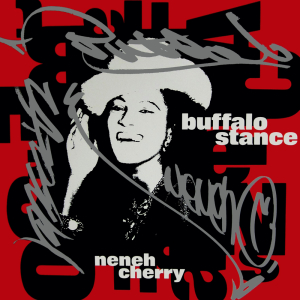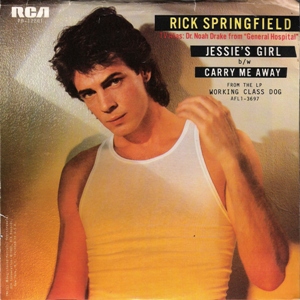 When Bryan Adams released “Summer of ’69” in 1984, he wasn’t just giving the world a catchy rock anthem—he was capturing the essence of memory, youth, and the bittersweet ache of growing up. From the very first power-chord riff, the song evokes a sense of nostalgia that is immediate and visceral. Listeners are transported to a time of first loves, garage-band dreams, and the intoxicating freedom of teenage summers that felt endless. The song’s genius lies not only in its melodic hooks but in its universal appeal: it resonates with anyone who has ever looked back at the past with equal measures of joy and longing. Over nearly four decades, “Summer of ’69” has become more than a hit single; it is a cultural touchstone, a soundtrack to adolescence, and an enduring testament to the power of rock ’n’ roll to capture life’s fleeting, golden moments.
When Bryan Adams released “Summer of ’69” in 1984, he wasn’t just giving the world a catchy rock anthem—he was capturing the essence of memory, youth, and the bittersweet ache of growing up. From the very first power-chord riff, the song evokes a sense of nostalgia that is immediate and visceral. Listeners are transported to a time of first loves, garage-band dreams, and the intoxicating freedom of teenage summers that felt endless. The song’s genius lies not only in its melodic hooks but in its universal appeal: it resonates with anyone who has ever looked back at the past with equal measures of joy and longing. Over nearly four decades, “Summer of ’69” has become more than a hit single; it is a cultural touchstone, a soundtrack to adolescence, and an enduring testament to the power of rock ’n’ roll to capture life’s fleeting, golden moments.
“Summer of ’69” arrived at a moment in Bryan Adams’ career when he was solidifying his identity as a rock singer capable of blending arena-ready riffs with heartfelt storytelling. The song opens with an unmistakable guitar line, full of energy and optimism, immediately establishing the tone for a tale of youthful ambition and romantic exploration. Adams’ vocals are raw and earnest, delivering the lyrics with a sense of lived experience that makes the narrative feel both personal and universal. Listeners instantly connect to his recollections of forming a band, falling in love, and feeling invincible in the glow of summer days, a sentiment that has helped the song endure as a sing-along favorite at concerts, parties, and sports events worldwide.
The Songwriting Genius Behind the Nostalgia
Bryan Adams co-wrote “Summer of ’69” with Jim Vallance, a longtime collaborator whose influence helped shape Adams’ signature style of rock-infused storytelling. While many remember the song as a romanticized recollection of the year 1969, Adams himself has noted that the number wasn’t meant to be taken literally—it was a symbolic marker of youth and nostalgia. The songwriting combines personal memory with universal themes: the excitement of first experiences, the camaraderie of friendships, and the bittersweet recognition that youth is fleeting.
Musically, the track is deceptively simple. The opening guitar riff, driving rhythm, and soaring chorus create a sense of movement and energy that mirrors the urgency of adolescence. Adams’ voice conveys a mix of excitement and wistfulness, a perfect reflection of the song’s dual nature: it celebrates youthful freedom while acknowledging its impermanence. This balance between joy and melancholy is a large part of why the track remains so emotionally resonant.
1984: Rock in Its Arena Era
The year 1984 was a dynamic period in rock music. The arena rock sound was dominating airwaves, synthesizers were being introduced into mainstream pop, and MTV was beginning to change how fans consumed music. “Summer of ’69” fit perfectly within this landscape—it was rock with enough edge to satisfy guitar fans, catchy enough for pop radio, and emotionally charged enough to feel authentic. Its release solidified Adams’ position as one of the era’s most compelling singer-songwriters.
Unlike many contemporaneous hits that leaned heavily on synthesized production, “Summer of ’69” relies on the raw energy of traditional rock instrumentation. The guitars, drums, and bass provide a straightforward yet dynamic foundation, allowing Adams’ vocals and the narrative to take center stage. This organic approach helped the track retain its timeless quality, even as production trends evolved in the decades that followed.
Lyrics That Capture Universal Experiences
What truly sets “Summer of ’69” apart is its lyrical narrative. The song begins with memories of forming a band in a friend’s garage, a universal experience for aspiring musicians everywhere. Lines like “I got my first real six-string / Bought it at the five-and-dime” immediately establish a sense of authenticity and relatability. The storytelling continues with romantic encounters, youthful mistakes, and moments of reckless joy, culminating in a chorus that celebrates the spirit of looking back: “Oh, when I look back now / That summer seemed to last forever.”
The genius of the lyrics lies in their specificity and universality at once. The details—buying a guitar, driving late at night, chasing love—make the song vivid, while the emotions evoked—freedom, ambition, and longing—are universal. Listeners are able to superimpose their own memories onto Adams’ narrative, which is why the song has remained deeply personal for countless fans, even decades after its release.
The Music: Driving, Dynamic, and Timeless
Musically, “Summer of ’69” is a masterclass in balancing simplicity with impact. The opening guitar riff immediately establishes the song’s upbeat tone, while the rhythm section drives the narrative forward with unrelenting energy. Adams’ vocal delivery is passionate and unpolished in just the right way, giving the song an authenticity that contrasts with the polished, synthesized pop of the mid-1980s.
The chorus is infectious, designed to be sung at the top of your lungs, and its melodic structure ensures that it lodges in the listener’s memory almost immediately. The song also demonstrates a clever dynamic range: verses are intimate and reflective, while choruses expand into anthemic celebration. This contrast mirrors the emotional push and pull of memory itself—the quiet introspection of looking back balanced against the exuberance of reliving youth in your imagination.
Cultural Impact and Enduring Legacy
Since its release, “Summer of ’69” has become more than just a Bryan Adams hit—it is a cultural phenomenon. It has appeared in films, television shows, commercials, and countless playlists, becoming the definitive anthem of nostalgia for many. The song’s themes of youth, first love, and the passage of time have resonated across generations, allowing it to maintain relevance even for listeners who were not alive during the mid-1980s.
The song is also a staple at live performances, where audiences often sing along in unison, creating a communal experience that reinforces its emotional impact. Bryan Adams himself continues to perform it worldwide, and the energy it generates is as potent today as it was in 1984. “Summer of ’69” has achieved a rare kind of immortality in popular music, serving as both a personal anthem and a collective cultural memory.
Why the Song Still Matters Today
There are several reasons why “Summer of ’69” remains relevant more than three decades after its release. First, the song taps into a universal human experience: nostalgia. Everyone has moments from youth that feel magical and formative, and Adams captures that feeling perfectly. Second, the music itself is timeless. Unlike heavily produced tracks that can feel dated, the straightforward rock instrumentation ensures that the song remains vibrant and energetic. Third, the lyrics’ combination of specificity and universality allows listeners to insert their own memories into the narrative, making it feel deeply personal.
Finally, the song’s enduring appeal is also tied to its emotional honesty. Adams doesn’t try to glamorize or idealize youth—he celebrates it while acknowledging its impermanence. That bittersweet quality elevates the song beyond simple pop nostalgia into a piece of art that resonates on multiple levels.
A Symbol of Youth, Memory, and Rock ’n’ Roll
“Summer of ’69” is more than a song; it is a symbol. It represents the excitement, passion, and impermanence of youth. It captures the thrill of first love, the camaraderie of friends, and the audacity of dreaming big. At the same time, it acknowledges that those moments are fleeting and precious, encouraging listeners to reflect on their own lives with a sense of both joy and wistfulness.
The song’s continued popularity across decades demonstrates its timelessness. It is covered by new artists, referenced in popular culture, and celebrated in live performances around the globe. For many, it evokes a personal soundtrack to adolescence, encapsulating experiences that are simultaneously individual and universal.
Conclusion: A Track That Defines Generations
Released in 1984, Bryan Adams’ “Summer of ’69” is far more than a chart-topping hit. It is a masterful blend of narrative, melody, and emotion, capturing the essence of youthful exuberance and the bittersweet beauty of memory. Its combination of infectious hooks, vivid lyrics, and heartfelt delivery has ensured its place as one of the most enduring rock songs of all time.
As listeners continue to sing along to its chorus, reminisce about their own summers, or introduce it to new generations, “Summer of ’69” stands as a testament to the enduring power of rock ’n’ roll to evoke emotion, connect people, and immortalize moments in time. Bryan Adams didn’t just write a song—he crafted an anthem of youth, freedom, and memory, one that will continue to resonate long after the years have passed.


